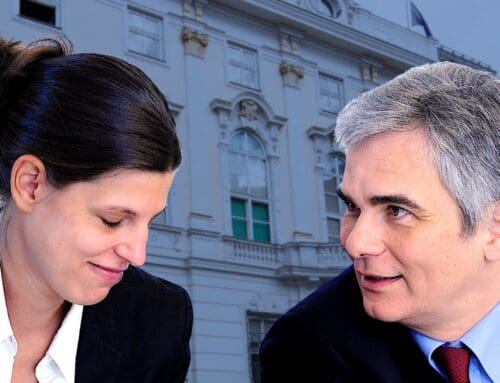
BEN SHAPIRO: The Death Of Marriage Is Killing America
In the immediate aftermath of the 2022 midterm elections — a shocking overperformance by Democratic candidates given the fact that Republicans won the national popular vote by upwards of 4.5 percent — President Joe Biden celebrated with his followers. One group in particular, he said, ought to receive credit for the Democratic victory: women. “As I said,” Biden rambled, “women in America made their voices heard, man. I said last year one of the most extraordinary things about the Dobbs decision is what was about to challenge American women when the justice said they have it in their power to basically say let’s see what they’re going to do. Well, guess what? Y’all showed up and beat the hell out of them.”
Buried in this garbled syntax was the genuine kernel of a point: Democrats’ victory was achieved largely on the back of female votes. But not all female votes — one particular type of female votes: those of single women. According to an Edison Research Network Exit Poll, married men voted Republican at a 59-39 percent clip; married women voted Republican 56-42; unmarried men voted 52-45; and unmarried women voted Democrat at a rate of 68-31.
This makes single women a more reliably Democratic voter bloc than Asian-Americans (58 percent Democrat) or Hispanic-Americans (61 percent Democrat). They’re also a far larger voter bloc than either: there are about 41.8 million never married women in the United States, another 15.1 million divorced women in the United States, and some 11.6 million widowed women in the United States. While single women vote at a lower rate than married women, they vote as a political bloc — and as they grow as a percentage of the population, this would make them the single most powerful political bloc in America.
And their constituency is growing. As marriage scholar Brad Wilcox points out, marriage rates have dropped more than 60 percent since 1970, and fertility rate is down to 1.7. The conclusion: “more than a third of today’s young adults will never marry, and about one quarter will never have children.” And generation upon generation, the percentage of girls who will marry is dropping.
The death of marriage in America is part of a broader narrative about the death of marriage in the West. America still has the highest marriage rate among other Western countries other than Hungary and Israel – but the marriage rate among all Western countries has declined markedly over the course of the last century.
So, what happened?
What Marriage Meant
To understand why so many fewer people are getting married, we must begin with a simple fact: the very definition of marriage has changed dramatically over the course of the last century. Marriage was, for nearly all of human history, predominantly built around child-bearing and child-rearing; as the Bible suggested in Genesis 1 and 2, a man would leave his father and mother and cleave to his wife, and they would become one flesh; by doing so, human beings would be fruitful and multiply.
This was not merely normative — it was descriptive of the natural state of mankind. Virtually every known human culture has socially-approved marriage — the joining of a man and a woman. Historically speaking, many cultures showed tolerance for polygamy; almost none showed tolerance for polyandry. This is because even polygamy functions on the basis of a single man and a single woman procreating and a child being raised in the context of that dyad; the fact that the man might have several such relationships with women does not obliterate the fact that each individual dyad is indeed a dyad. There is no known culture historically that treated male-male or female-female dyads as on a societal plane with male-female couplings.
Because marriage was built around the idea of family formation, this meant that the chief attribute of marriage was duty; family was not a “voluntary association.” As historian Gertrude Himmelfarb states:
It has been a “given” of life, an immutable fact, starting before birth (in the lives of parents and grandparents) and persisting after death (in the lives of children and grandchildren). Because the family has had this involuntary, mandatory character, it has also been assumed to have the authority to carry out its primary functions: the rearing and socializing of children and the caring for its weakest and most vulnerable members, the old and the young.
If family was simply a reality of life, it was not primarily rooted in subjective feelings of “love”; love may have been a wonderful component of family, but it did not lie at its root. Duty lay at the root, as historian Robert Nisbet states:
Paradoxical as it may seem, it is not love — least of all sexual passion — that the family has been built around historically, but, rather, duty and obligation….the great strength of the family has everywhere been consanguineal rather than conjugal. And here, not affection, but duty, obligation, honor, mutual aid, and protection have been the key elements.
Family has historically been seen as the building block of society. As Edmund Burke famously put it, “To be attached to the subdivision, to love the little platoon we belong to in society, is the first principle (the germ as it were) of public affections. It is the first link in the series by which we proceed towards a love to our country, and to mankind.” And as Nisbet correctly points out, “The state is an association of families, not of discrete individuals.” And the family is the basis for the growth of a society, not merely in terms of numbers, but in terms of creativity and innovation and connection:
More than any other social scientist, it was Frederick Le Play in the last century who first saw clearly and systematically the close relation between what he called the “stem” family — la famille souche — and the general creative prosperity of the surrounding social order. The “stem” family Le Play found among the Jews, ancient Greeks, pre-Imperial Romans, and most of the European peoples prior to the advent of the national state and its increasingly atomizing effect upon kindred, clan, and household. It was a type of family, Le Play observed, that combined communality and opportunity for individual expression in a way that avoided the corporatism of the ancient patriarchal type of family on the one hand and the egoistic particularism of modernity on the other….We can, he argued, use the family as an almost infallible touchstone of the material and cultural prosperity of a people. When it is strong, closely linked with private property, treated as the essential context of education in society, and its sanctity recognized by law and custom, the probability is extremely high that we shall find the rest of the social order characterized by that subtle but puissant fusion of stability and individual mobility which is the hallmark of great ages.
Societies built themselves around the preservation of the marital institution. They had to: as philosopher Joseph Raz correctly points out, “Monogamy, assuming it is the only morally valuable form of marriage, cannot be practiced by an individual. It requires a culture which recognizes it, and which supports it through the public’s attitude and through its formal institutions.” Because marriage was a societal institution — society’s chief interest is in its own preservation, which can only be attained by the creation and stability of family units — society and law were designed to foment marriage. The law punished adultery, or at least provided for the possibility of penalty; the law treated divorce as an evil, with proof of cause being necessary to its attainment. Social penalties attached to illegitimacy and to sexual activity outside of wedlock.
And just as importantly, communities celebrated marriages and supported them, not as mere commemorations of vague subjective love, but as the beginning of the formation of families that would contribute to the further building of the community. In the Jewish community, for example, brides and grooms are typically blessed by wedding attendees with the statement, “May you merit to build a faithful home in the Jewish people (Bayis Ne’eman B’Yisrael).”
How “Marriage” Changed
A society in which sexual freedom is seen as the highest priority will not be a society in which monogamy can flourish.
And yet that is precisely the society we have now created. Because, as previously discussed, we have redefined human identity away from the nexus of social institutions and our individuality and have located that identity solely in subjective feelings — because we have embraced Transgressivism — we have redefined marriage. Marriage has now been “voluntarized,” as Himmelfarb states: “it is whatever we choose to make of it.” Thus “we move in and out of families at will.” Polls show that Americans overwhelmingly reject any definition of family that is rooted in blood relationships or child-bearing and rearing. Family is now merely subjective love.
Such an ideological change in the nature of marriage would not have been possible without three specific changes: the rise of birth control; the rise of the welfare state; and the rise of no-fault divorce.
Birth control made it possible to disconnect the sexual union from the possibility of child-bearing and rearing; this, in turn, allowed people to disconnect sexual pairing from the possibility of long-term planning, including sharing values or futures with a sexual partner. Marriage, which had been the safe confine for sex, was no longer necessary.
Welfare also helped break the definition of marriage: if marriage had been about family formation for the purpose of supporting children, the government would now step in and fill the gap. The government would play the role of father.
Thirdly, the rise of no-fault divorce legally enshrined the new definition of marriage. Society no longer had a stake in the continuation of marriage; now couples could leave one another for any reason or no reason at all. Why bother marrying if cohabitation was less legally burdensome, and no worse morally? Unsurprisingly, cohabitation has now become more common than marriage itself — according to Pew, more Americans have now lived with a romantic partner than married one, and fully 69 percent of Americans believe it is morally acceptable to live with a partner even if you never intend to get married.
As philosopher Robert George writes:
The law is a teacher. Either it will teach that marriage is a reality in which people can choose to participate but whose contours people cannot make and remake at will, or it will teach that marriage is a mere convention that is malleable in such a way that individuals, couples, or, indeed, groups can choose to make of it whatever suits their desires, goals, and so on.
But there was a final element, too, necessary to break down marriage: women had to be convinced that trading traditional marriage and children for the brave new world of feminist liberation — sexual promiscuity, more time in the workforce, and childlessness —would be of net benefit. Or if not of net benefit, an act of virtuous resistance to a cruel patriarchal system.
That was precisely the cause pressed forward by the radical feminist movement in the 1960s and 1970s. In The Feminine Mystique (1963), Betty Friedan argued that married women had been welded into a “comfortable concentration camp” and turned into “walking corpses.” Simone de Beauvoir argued women should actually be barred from motherhood, lest they find that they enjoyed raising children:
No woman should be authorized to stay at home to raise her children. Society should be totally different. Women should not have that choice, precisely because if there is such a choice, too many women will make that one. It is a way of forcing women in a certain direction.
Radical feminist Shulamith Firestone took this argument to its logical conclusion: the only way for women to be freed of the tyranny of the patriarchy would be for them to be totally freed from the tyranny of biology itself. All humanity had to aim itself toward total androgyny, which would end in full interchangeability — and most importantly, the death of family:
Until a certain level of evolution had been reached and technology had achieved its present sophistication, to question fundamental biological conditions was insanity…. We are no longer just animals. And the kingdom of nature does not reign absolute….the end goal of feminist revolution must be, unlike that of the first feminist movement, not just the elimination of male privilege but of the sex distinction itself: genital differences between human beings would no longer matter culturally. (A reversion to an unobstructed pansexuality Freud’s ‘polymorphous perversity’ – would probably supersede hetero/homo/bi-sexuality.) The reproduction of the species by one sex for the benefit of both would be replaced by (at least the option of) artificial reproduction: children would be born to both sexes equally, or independently of either, however one chooses to look at it; the dependence of the child on the mother (and vice versa) would give way to a greatly shortened dependence on a small group of others in general, and any remaining inferiority to adults in physical strength would be compensated for culturally. The division of labour would be ended by the elimination of labour altogether (through cybernetics). The tyranny of the biological family would be broken. And with it the psychology of power.
If Firestone was too radical for many women, the broad-based cultural attack on marriage offered plenty of milder options: the lie that women could “have it all,” delaying marriage and child-bearing indefinitely without consequence while working endless hours at the office; the suggestion that a woman could sire children without a husband and be just as happy; the argument that artificial insemination, surrogacy, or delayed-onset childbirth could provide an easy solution to any issues arising from the delay in marriage or failure to find a husband.
The Girlboss Bloc
The results are statistically obvious: Americans aren’t getting married. In 1990, just 29 percent of Americans aged 25 to 54 said they were unpartnered; as of 2019, that number was 38 percent. The number of Americans who said they were married was 67 percent in 1990; that number was 53 percent in 2019.

The age of marriage has risen dramatically in the United States; in the 1950s, women married at 20 and men at 23. Today, those numbers are 27 and 29. The rate of childbirth has declined accordingly: from a fertility rate of 3.4 in 1960 to 1.7 today. Even for those children who are born, they’re far less likely to ever know their fathers: in 1965, 24 percent of black infants were born to single moms, along with 3.1 percent of white infants. By 1990 those numbers were 64 percent for black babies and 18 percent for white babies. Those numbers have leveled off somewhat for black Americans, but they’ve kept climbing for whites — fully 28 percent of white babies are now born out of wedlock. Overall, four in ten children in America are born to a single mom.
Overall, single women are falling behind economically. Contrary to the popular television notion that single women are girlbossing hard across America – that the best path to prosperity lies in avoiding marriage — on average, single women are doing far worse economically than married women are, simply because married families do better economically. This makes perfect sense: because a high percentage of married women work, two-income families routinely outstrip single women. Furthermore, marriage rates have dropped most among the least educated — those who go to college and are most likely to girlboss are also more likely to get married. Unsurprisingly, then, according to Pew Research, unpartnered women earn on average $8,000 less than partnered women, despite being slightly more employed, and despite the fact that partnered women are twice as likely to live with one or more of their own children.
It is therefore unsurprising that single women might seek answers from the government — answers that allow them to avoid the steepest downsides of being single. A growing number of women might, for example, want more government benefits in order to supplement their income. (They do.) A growing number of women might think of abortion as an absolute necessity, given the fact that marriage generally alleviates the desire for abortion (just 14 percent of abortions are obtained by married women). Many single women will resonate to the desire for androgyny implicit in the call for freely-available abortion made by former Supreme Court Justice Ruth Bader Ginsburg in Gonzalez v. Carhart (2007):
legal challenges to undue restrictions on abortion procedures do not seek to vindicate some generalized notion of privacy; rather, they center on a woman’s autonomy to determine her life’s course, and thus to enjoy equal citizenship stature.
She added not just her critique of sexism throughout history, ranging from restrictions on women working to restrictions on women voting, but her critique of gender roles entirely, excoriating “ancient notions about women’s place in the family and under the Constitution — ideas that have long since been discredited.” Those notions included the idea that “The paramount destiny and mission of woman are to fulfil[l] the noble and benign offices of wife and mother.” While such notions should never have been used to discriminate against women in law, to disparage the centrality of marriage and motherhood runs counter to both biology and the possibility of fulfillment for the vast majority of women throughout history.
On this point, the data are robust: single women are not happier than their married counterparts. Data from the General Social Survey between 2010 and 2018 show that married women aged 18 to 50 were significantly happier than their unmarried counterparts. For women who were single and never-married, self-reported rates of being “very happy” were 24 percent for those without children and 19 percent for those with kids — compared with rates exceeding 40 percent for married women. Overall, women in Europe and America report being less satisfied with their lives now than they did back in the supposedly terrible days of 1970.
As our society devalues marriage, we all become more isolated — but this is particularly hard on single women, particularly those who bear children out of wedlock. Again, none of this is surprising: as Nisbet wrote in 1975, “State and economy alike have, in effect, bypassed family and community to go straight to the individual, thus leaving him so often precariously exposed to the chilling currents of anonymity and isolation. The rootlessness of our age is attested to by the ease with which human beings turn to the symbols of power and politics, to movements and crusades of one kind or another.”
The Life Of Julia
In 2021, the White House brought forth a slide show it called “The Life Of Linda.” It was a sequel to Barack Obama’s 2012 “Life of Julia,” which told the story of a female across the course of her life, from age three to retirement; Julia lived her entire life unmarried, had a child out of wedlock, and was supported by the government. So, too, was Linda.

Linda is a “working mother” who makes a grand total of $40,000 per year; like Julia, there’s no husband in the picture. She relies on the child tax credit to get by and government daycare to take care of her son while she’s busy at work. She lives happily ever after by receiving home and hearing care in her old age thanks to Medicare expansions.
This isn’t the picture of a particularly wonderful-sounding life. And yet this is the promise made to single women by the Democratic Party.
That promise only sounds good in the absence of a cultural alternative: the alternative of a warm home, with husband and children, embedded in community, surrounded by social support of neighbors and friends. All of that is absent from a society in which marriage and family have been eviscerated in the name of a centralized bureaucracy designed to alleviate the burdens of life – but which removes the meaning of life in the process.
Democrats may win future elections with the votes of all the single ladies. But America won’t have much of a future if marriage isn’t revitalized as a moving force in the lives of tens of millions of Americans, male and female. And that means a rethinking of the entire framework of individual and family in the modern world — a return to the notion that duty, not subjective emotional state, stands at the center of individual and societal flourishing.







